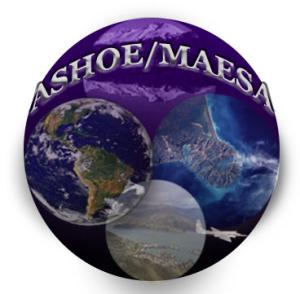The Airborne Southern Hemisphere Ozone Experiment (ASHOE) is designed to examine the causes of ozone loss in the Southern Hemisphere lower stratosphere and to investigate how the loss is related to polar, mid-latitude, and tropical processes. ASHOE will be conducted in concert with the campaign, Measurements for Assessing the Effects of Stratospheric Aircraft (MAESA), whose focus is to provide information about stratospheric photochemistry and transport forassessing the potential environmental effects of stratospheric aircraft. These combined objectives will be met by a series of flights of the National Aeronautics and Space Administration (NASA) ER-2 high-altitude research aircraft from Christchurch, New Zealand, and on transit flights from Moffett Field, California, to Christchurch via Hawaii and Fiji. Flights of the remotely piloted vehicle Perseus, or possibly balloons, to higher altitudes in the tropics and mid-latitudes will also be made. There are several compelling reasons to study processes relating to ozone depletion in the Southern Hemisphere and tropical lower stratosphere:
The downward trend in total ozone at sub-polar and mid-latitudes is large and has been observed year-round, with the greatest trends occurring when the vortex is cold enough (as in May through October) to support the formation of polar stratospheric clouds, which initiate the chlorine-based chemistry that causes the Antarctic ozone holes. In the coming years, a detailed understanding of the balance between polar processes and local chemistry will be required, so that governments may make sound decisions regarding the use of man-made chemicals.
The possibility of the ozone hole spreading to mid-latitudes, either by fluid mechanical peel-off of filaments of vortex air or by actual equatorward expansion of the vortex, is a controversial issue.
Recent work has shown that ozone loss in the lower stratosphere is a major factor in calculations of the greenhouse effect. Unless the processes that cause ozone loss at various latitudes are understood, it will be difficult to predict the net effect of human-influenced emissions on surface warming.
The role of aerosols in perturbing lower stratospheric chemistry, and hence depleting ozone, and enhancement of aerosols by volcanic eruptions remains poorly characterized.
The transport of material injected into the lower stratosphere at tropical and mid-latitudes is a central issue in assessing the effects on stratospheric ozone by exhaust emissions from possible future high-speed civil transport aircraft (HSCTs).
The rates of production and destruction of ozone and reactive trace gases (such as the nitrogen oxides) in the polar, mid-latitude, and tropical regions have never been directly tested by measurements.


